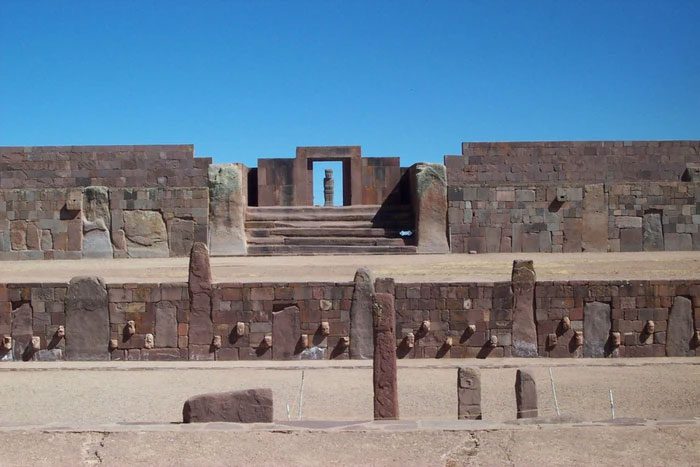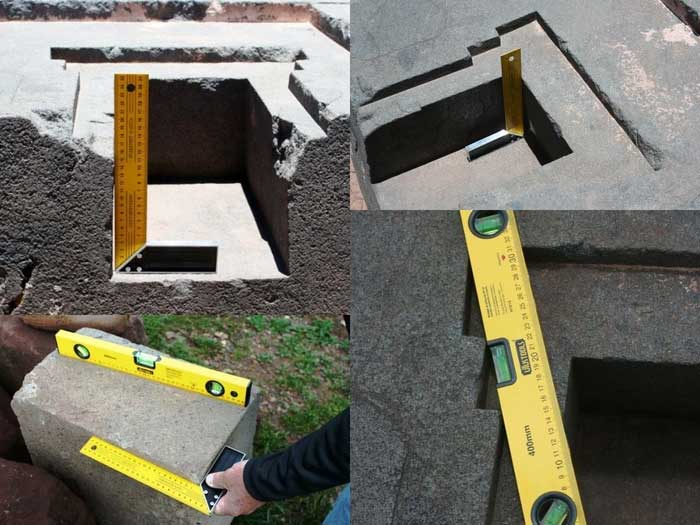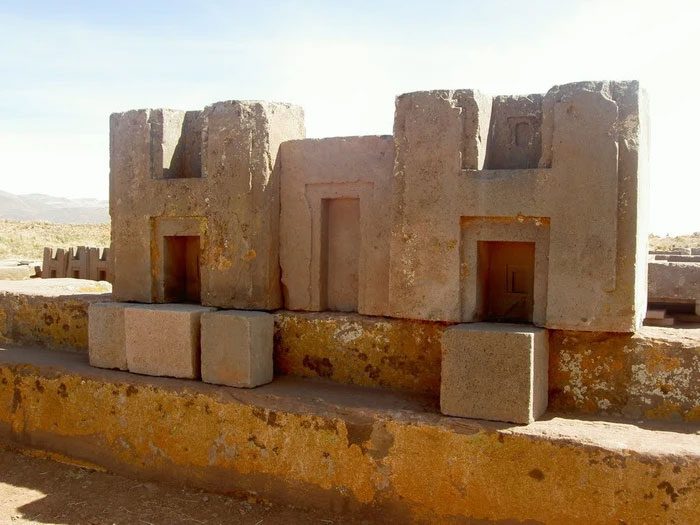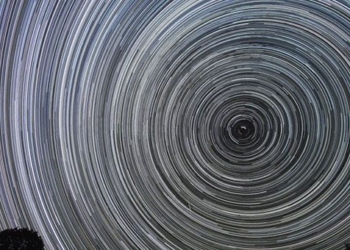Since the discovery of Puma Punku, countless researchers have worked diligently to uncover the mysteries behind this archaeological site.
Located high in the Andes Mountains of Bolivia, the ancient city of Tiwanaku (Spanish: Tiahuanaco) boasts architectural achievements that continue to baffle archaeologists and historians. Majestic stone structures such as the Akapana pyramid and the Puma Punku platform stand as testaments to a once-thriving civilization, yet the methods used to construct these edifices remain shrouded in mystery.
Over time, ancient civilizations have left us with a wealth of vibrant cultural legacies, including pyramids, Stonehenge in England, and the stone statues on Easter Island. Among these is a site believed to be even more remarkable than the Pyramids – “The Megalithic Site of Puma Punku.”
When discussing Puma Punku, many may feel unfamiliar; it is located in the Bolivian Andes, a barren land at an altitude of 3,800 meters. This site is most famous for its meticulously processed stones that appear as if they were cut by lasers.
The megaliths of Puma Punku are made of extremely hard andesite, believed to have a hardness of 7 on the Mohs scale. Cutting andesite with the technology available at the time seems nearly impossible, as even with modern technology, working with andesite is quite challenging. Even more astonishing is that on these hard stones, it is difficult to create conventional circular holes even with modern machinery.
How did the Tiwanaku people manage to move and assemble such enormous stones using what seemed like primitive technology for their time? What kind of technology did they use to process andesite stones?

If you closely observe the stone slabs here, you may encounter some very complex stone structures, as if they were created by machines or even laser devices.
According to local legends, over 17,000 years ago, mysterious giants arrived in the world to help construct the Puma Punku site. These giants possessed extraordinary strength, enabling them to easily carry stones from quarries, and through magical power, the stones could float and stack together into shapes.
Although this legend is incredibly hard to believe, since the discovery of Puma Punku, countless researchers have worked hard to uncover the mystery behind this site. Between 1910 and 1945, Austrian archaeologist Arthur Posnanski hypothesized that Puma Punku could date back around 11,000 to 15,000 years through geological age studies.
However, this claim was not widely accepted. It wasn’t until 1999, in his special research paper, Flamich, an archaeology professor at the University of Pennsylvania, published results identifying the radiocarbon dating of Puma Punku. Surprisingly, it turned out that Puma Punku was constructed 1,500 years ago. This timeline has since been accepted by contemporary mainstream science and archaeology.

At Puma Punku, you will find extraordinary stones with perfect square angles and smooth surfaces.
The magnificent architecture of the Puma Punku ruins drives researchers to explore the historical and cultural context behind it. After many years of study by archaeologists and experts, scholars discovered that these structures were built using two types of stones: red sandstone and andesite.
The heaviest stone at this site weighs over 130 tons, with other stones ranging in weight from dozens to nearly a hundred tons, which is quite impressive. Moreover, each megalith is intricately cut without a single flaw. Even with interlocking and overlapping shapes, the angles are cut with remarkable precision.
The intricacy is further demonstrated by the grooves in the stones and the uniformly arranged small circular holes with a diameter of only 5 mm. In the ruins, you can also see large stones joined together with nails.
What astonishes researchers even more is that these nails turn out to be a unique alloy of copper, arsenic, nickel, and bronze. This indicates that the builders of Puma Punku were not only skilled in handling massive stones but also possessed advanced metal smelting and processing technology.

Professor Davidowitz’s team believes that these stone materials could be synthetic, as they contain some materials not found in natural stone.
According to the results of studies by archaeologists, the red sandstone at Puma Punku comes from Lake Titicaca, located 10 km away, while the smaller andesite stones come from the Copacabana Peninsula, which is 90 km away. These massive stones were transported to the plateau at an altitude of 3,800 meters by rolling logs, using ropes, alpaca camels, and sufficient manpower.
However, in 2018, French materials scientist Professor Joseph Davidowitz made a surprising discovery while studying stone samples from Puma Punku. He found some materials that do not exist in natural stone and even detected the presence of organic matter in the stone samples he brought back from Puma Punku. This finding attracted the attention of the scientific community because if true, these stone samples seem to have the potential of being synthetic materials.

According to the research team’s observations, the stone materials of Puma Punku consist of red sandstone and andesite, which have been used in many ancient architectural works in the area, including constructions like the “Gateway of the Sun” and the “Gateway of the Moon.” These structures are massive and complex, containing numerous grooves and holes that appear so intricate that it’s hard to imagine they were carved by hand by ancient people.
To confirm this hypothesis, the research team sought stone materials near Puma Punku and added local organic materials as a binder, ultimately succeeding in recreating Puma Punku’s andesite stone. If this hypothesis is correct, then these ancient structures may have been built in a very different way than previously thought.
If ancient humans were able to synthesize stone materials, they would not need to transport massive blocks, nor would they need to cut and carve enormous stones. This discovery could change what we know about the construction techniques of ancient civilizations.
Although the research team successfully recreated Puma Punku’s andesite stone, the stones they produced did not have the overlapping grooves seen in the originals, indicating that further research is needed to determine how ancient people created these complex structures.

There are megaliths at Puma Punku weighing over 100 tons.
However, the builders and history of Puma Punku remain a mystery. Knowledge about the complex is limited due to a lack of written records. Some archaeologists consider Puma Punku a part of the Tiwanaku civilization, a religious and ceremonial center that may have been related to astronomical observations and calendar calculations.
Some scholars believe that Puma Punku is older than the Tiwanaku civilization and is the remnants of a more primitive but advanced civilization. Others believe that Puma Punku was created by extraterrestrial beings or giants, as its construction techniques exceed the capabilities of humans of that time.
Whatever the truth behind Puma Punku may be, it remains one of the most fascinating and mysterious sites in the world. Its majestic presence inspires ongoing research and sparks our imagination, reminding us that history is filled with untold stories waiting to be uncovered.




















































